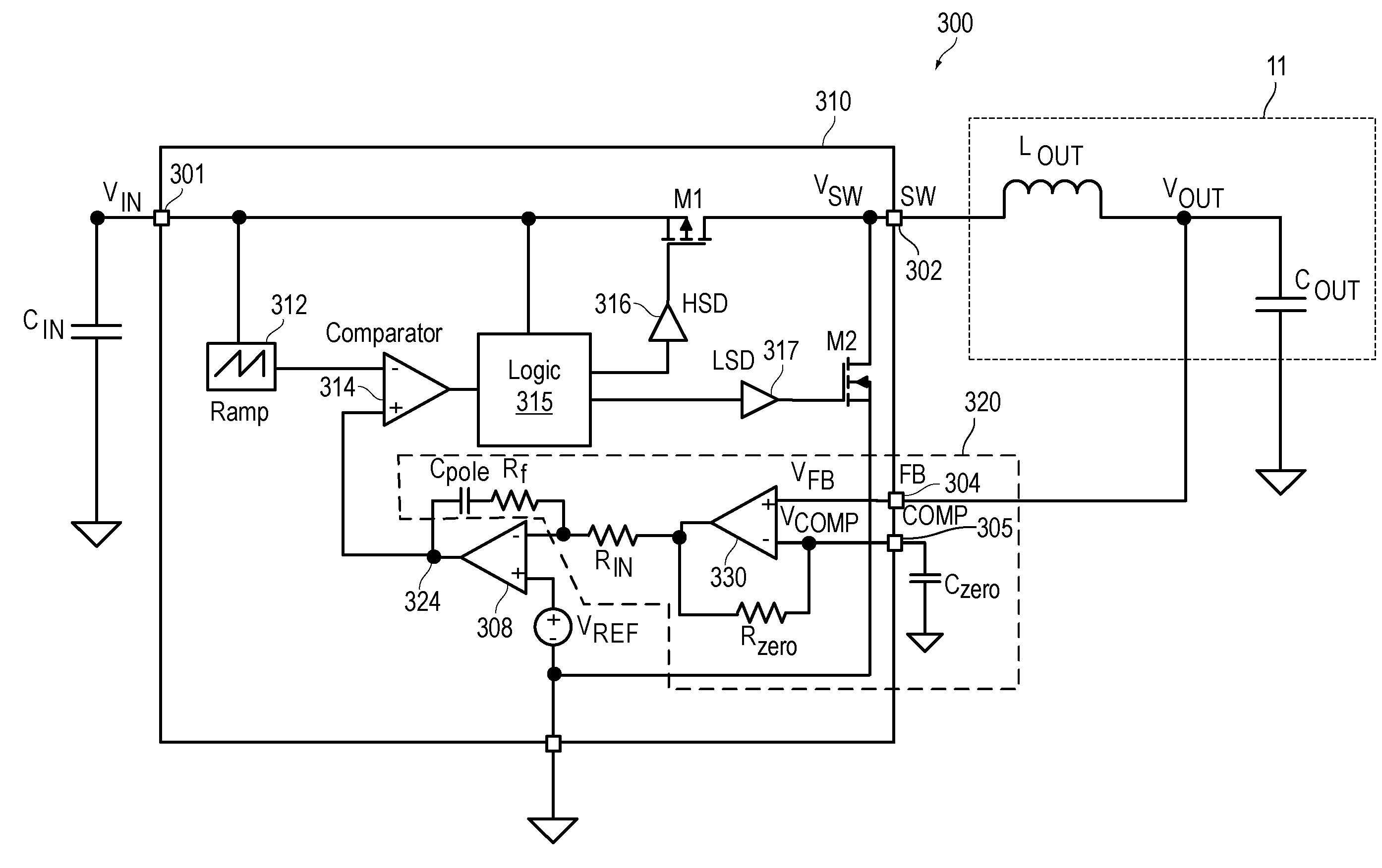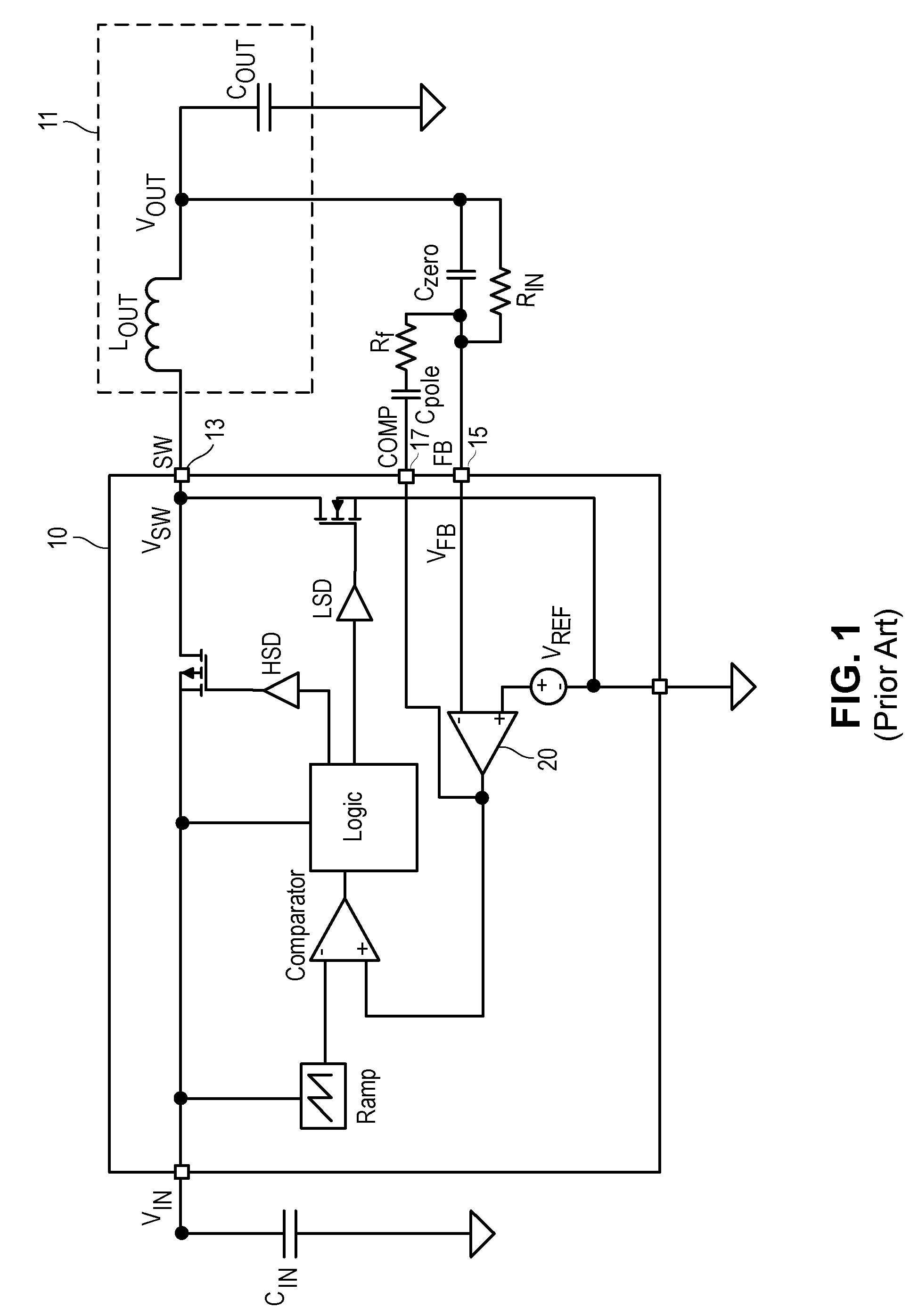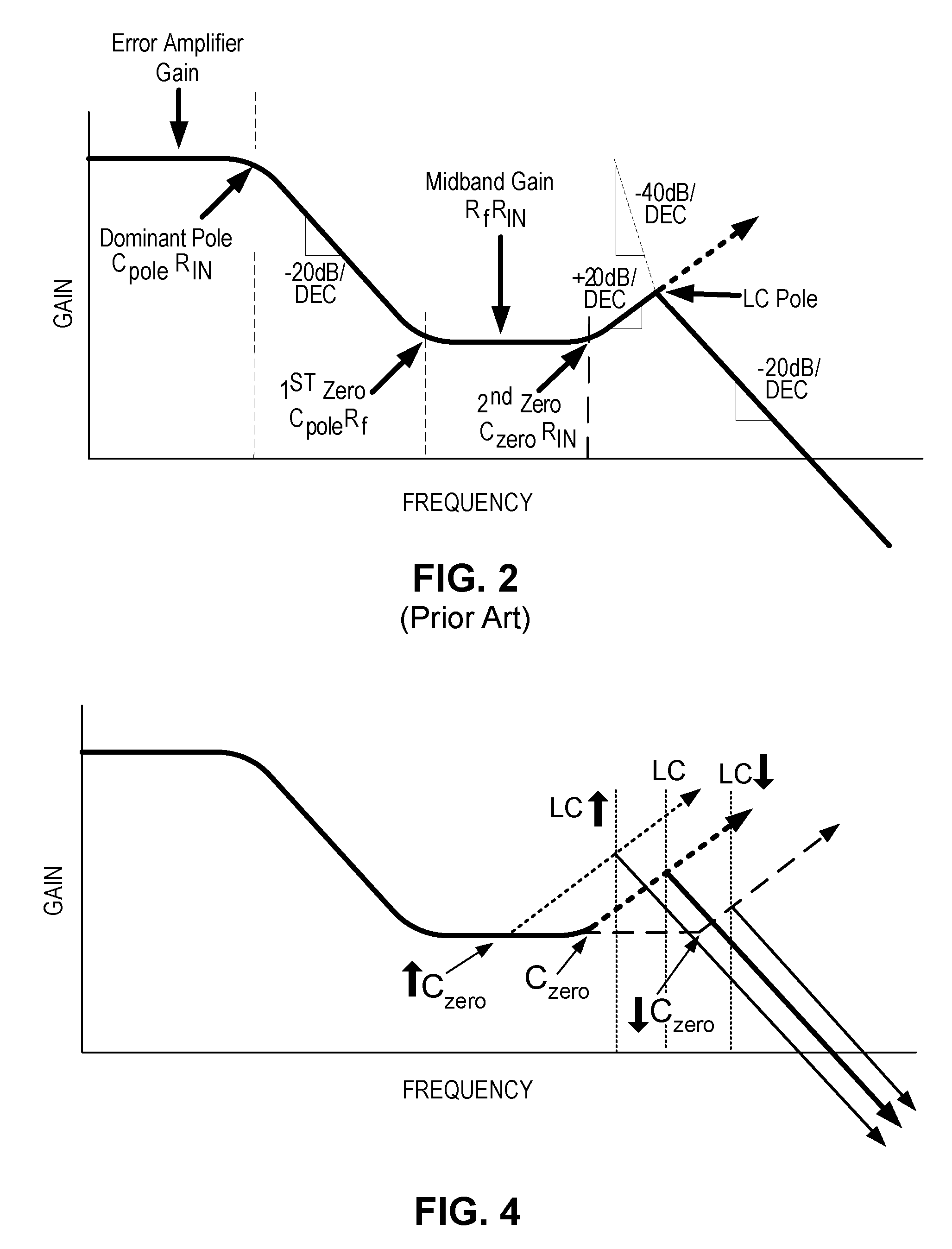Frequency compensation scheme for a switching regulator using external zero
a switching regulator and compensation scheme technology, applied in the circuit field, can solve the problems of limiting the gain loss that can be achieved, affecting the operation of the output voltage,
- Summary
- Abstract
- Description
- Claims
- Application Information
AI Technical Summary
Benefits of technology
Problems solved by technology
Method used
Image
Examples
second embodiment
[0040]According to another aspect of the present invention, the zero compensation scheme of the present invention is applied in a switching regulator to implement type II compensation. FIG. 5 is a schematic diagram of a switching regulator including a monolithic switching regulator controller implementing the zero compensation scheme according to the present invention. In the embodiment shown in FIG. 5, the output capacitor COUT of switching regulator 500 is implemented using a high ESR capacitor, such as a tantalum or electrolytic capacitor. Because of the high ESR, the output capacitor COUT provides a zero itself to the feedback loop. Therefore, the switching regulator 500 requires only one additional zero. The zero compensation circuit 520 of the present invention can thus be utilized by leaving the COMP input terminal unconnected. That is, no external zero capacitor needs to be connected to the COMP input terminal of zero compensation circuit 520. Zero compensation circuit 520 p...
third embodiment
[0043]According to yet another aspect of the present invention, an external (off-chip) RC network can be coupled in parallel with the off-chip zero capacitor to modify the loop gain, in particular the mid-band gain, of the feedback loop of the switching regulator. FIG. 7 is a schematic diagram of a switching regulator including a monolithic switching regulator controller implementing the zero compensation scheme according to the present invention. Switching regulator 700 in FIG. 7 incorporates a zero compensation circuit in the same manner as switching regulator 300 of FIG. 3 and like elements in FIGS. 3 and 7 are given like reference numerals to simplify the discussion.
[0044]In switching regulator 700, the zero compensation circuit 720 includes a zero capacitor Czero coupled to the COMP input terminal 705 which connects to the inverting input terminal of amplifier 730. Zero capacitor Czero provides an external zero to the feedback loop. Furthermore, an RC network, including a seria...
PUM
 Login to View More
Login to View More Abstract
Description
Claims
Application Information
 Login to View More
Login to View More - R&D
- Intellectual Property
- Life Sciences
- Materials
- Tech Scout
- Unparalleled Data Quality
- Higher Quality Content
- 60% Fewer Hallucinations
Browse by: Latest US Patents, China's latest patents, Technical Efficacy Thesaurus, Application Domain, Technology Topic, Popular Technical Reports.
© 2025 PatSnap. All rights reserved.Legal|Privacy policy|Modern Slavery Act Transparency Statement|Sitemap|About US| Contact US: help@patsnap.com



